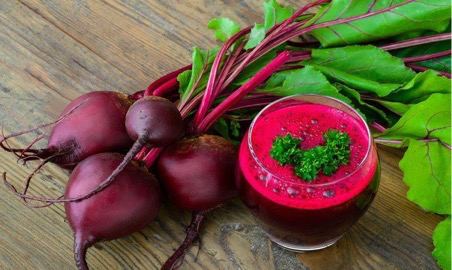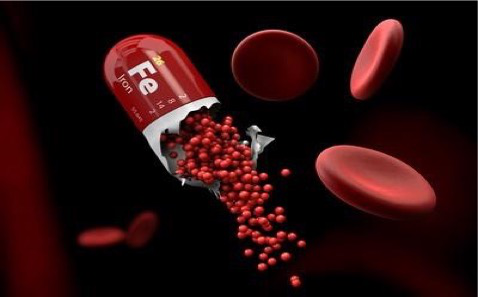Red Stool After Eating Beetroots? Know Why
Owing to their umpteen health benefits, beets are increasingly used in different food menus in our daily life. Beets contain high energy level that boosts your brainpower and improves your immune system. Besides, they are packed with Vitamin C, fiber, and potassium.
Consuming red beets can result in the red-colored stool that might resemble blood. People who experience reddish excreta after consuming red beets also typically excrete pink to red urine called Beeturia, which is due to the presence of betacyanin. This is entirely different from blood in the stool.
Let us further investigate the symptoms and how long this coloration lasts in our stool in case of Beeturia.
What Are the Signs and Symptoms of Beeturia
Discoloration of urine or stool is the primary symptom of Beeturia. The color of the urine appears to be red or pink after eating food containing beetroot or having beetroot juice. The pigment present in the beetroot gives it a reddish color. If a person consumes cooked beetroot, the urine may be lighter in color or pinkish in color, whereas ingestion of raw beetroot imparts dark red or dark pink color.
How Long Does the Color Sustain
The question as to how long after eating beets is stool red differs from person to person. The condition is totally dependent upon how much of the pigment was consumed and how long does their body take to digest. Actually, Beeturia does not happen every time you consume beets; only 10 to 14 percent of all beat eaters show this symptom. But generally, Beeturia does not last more than 48 hours. Thus. betanin takes about only 2 days to leave your system, after which the color of your stool and urine returns to normal.

Factors That Influence Beeturia Duration
Let's probe deeper into the topic and try to understand under what conditions Beeturia occurs.
1. The acidic environment of our stomach
To understand how long beetroot stays in your stool, we need to understand the process of digestion. Digestion occurs in the acidic environment in the stomach, where different digestive enzymes break down the food for its complete absorption. A less acidic environment prohibits the breaking of the betacyanin pigment properly, and the undigested betacyanin is distributed throughout the digestive system and lands in the bloodstream, followed by filtration in the kidneys, thus resulting in red coloration of the urine.
2. Deficiency of iron
If a person is iron deficient, it creates absorption problems in the gastrointestinal tract system. The poor absorption can result in secretion of the red dyes of beets in urine. A person suffering from iron deficiency may show conditions of Beeturia accompanied by pale skin, constant fatigue, anaemia, and concentration issues.
Moving forward, let's discuss the methods for the treatment of Beeturia and elucidate the difference between Beeturia and conditions in which the blood imparts color to urine and stool.

Treatment for Beeturia
In most cases, Beeturia is a harmless condition and treatment is not required. The red coloration vanishes away itself after a couple of days. But to speed up the treatment, one can increase water intake to wash out pigments. The water intake should be increased for 2 to 5 days, and the urine color should be examined accordingly.
Discontinue taking iron pills for a week as Beeturia has no correlation with iron absorption. To help increase your stomach acid so as to digest the betacyanin pigment completely, doctors suggest a digestive enzyme like betaine HCL, which increases the acid level in your stomach.
Treatment is required if factors other than Beeturia is adding up to the coloration of urine.
Differences Between Beeturia and Real Blood in Urine/ Stool
Will beets make your poop red every time you eat? Here are few steps mentioned to distinguish between pigment colours from beetroot and from the actual blood.
- If you put a drop of blood on toilet paper, it will appear bright red in color, whereas in case of Beeturia, the color is very light reddish.
- The red color may also occur in urine case of menstruation. But this condition is limited to women.
- When it comes to diffusion, beet juice diffuses more than blood as blood is heavier, having the tendency to aggregate. You can check this in a toilet bowl.
Beeturia: A Normal Condition
The red or pink coloration of urine may sound alarming, but it's not always a serious condition. However, there might be conditions of presence of real blood in your urine/stool. If you are unsure of the cause, immediately contact your doctor. Sometimes Beeturia may occur with other symptoms, which could indicate issues related to your stomach. Overall, Beeturia is a harmless condition and fades as the pigments get removed from the body.
If you are still wondering how long after eating beets is stool red, then watch the following video to explore more.
YOU MAY LIKE
-
Recognizing Acid Reflux Symptoms and Treatments
-
Apple Cider Vinegar as a Natural Remedy for Heartburn Sensation
-
Best Tips to Lose Weight on a Vegan Diet
-
Why Green Stool Color? Causes and Precautions
-
Best Ways to Stop Stomach Growling
-
A Not So Hungry Hippo: Loss of Appetite and How to Deal With It
-
High Liver Enzymes: Top Causes and Treatments
-
Is Ginger Good for Acid Reflux? Find Out Today
-
Passing Excessive Amounts of Gas? Causes & Home Remedies
-
Why Can’t You Poop and How to Make Yourself Poop?
